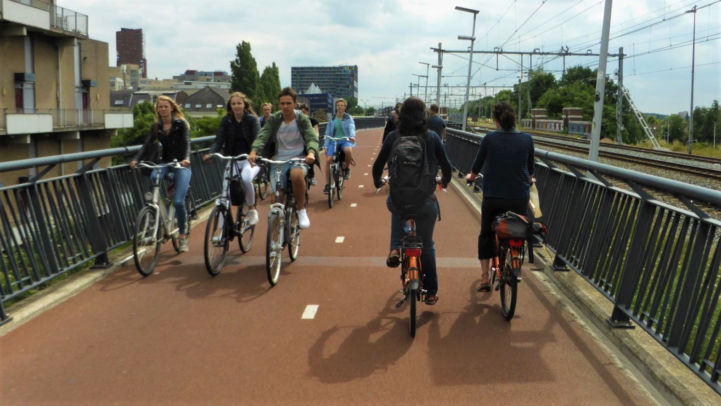New funding available for integrating EuroVelo and cycling into TEN-T

In the frame of the Connecting Europe Facility (CEF), a new Transport MAP call for proposals was published on 15 December 2020 with a total budget of €200 million. This call addresses actions related to the funding objective “removing bottlenecks, enhancing rail interoperability, bridging missing links and, in particular, improving cross-border sections” on the trans-European transport network (TEN-T). The general objective of the call is to prepare for the implementation of TEN-T core network projects by supporting studies and addressing the necessary preparatory steps for the forthcoming infrastructure works. These steps can relate for example to technical design, permitting procedures and preparation of the tendering process.
The funded activities may relate to the adaptation of TEN-T infrastructure to ensure the continuity of bicycle infrastructure for long-distance cycling paths such as the EuroVelo routes. These studies may relate to the relevant adaptation of traffic signalling systems or the addition of infrastructure dedicated to cyclists and pedestrians, such as tunnels, bypasses, bridges, walkways, and protected cycling paths. The studies may cover extensions along TEN-T routes or at crossings between TEN-T routes and long-distance cycling paths.
The ECF encourages all relevant authorities to use this opportunity to update the upcoming TEN-T projects with state-of-the-art cycling infrastructure. Many past TEN-T projects have created barriers for cycling networks, for example by cutting off suburbs from the city centre. On the other hand, we have also seen examples that TEN-T infrastructure can contribute significantly to making local transport more sustainable. Best-practice examples include adding a cycling bridge to a TEN-T railroad bridge or turning service roads along a high-speed railway line into a cycle highway. The key to success is to offer cyclists a faster, more direct, and more attractive route than that for cars.
The deadline for applications for the CEF Transport MAP call is 22 March 2021. The Innovation and Networks Executive Agency (INEA) will organise a virtual info day on 14 January 2021 (free, registration required).
The full text of the call is available here. If you have any questions regarding this call, or integrating EuroVelo and cycling in the TEN-T more generally, please contact us at [email protected].
Author: Aleksander Buczyński